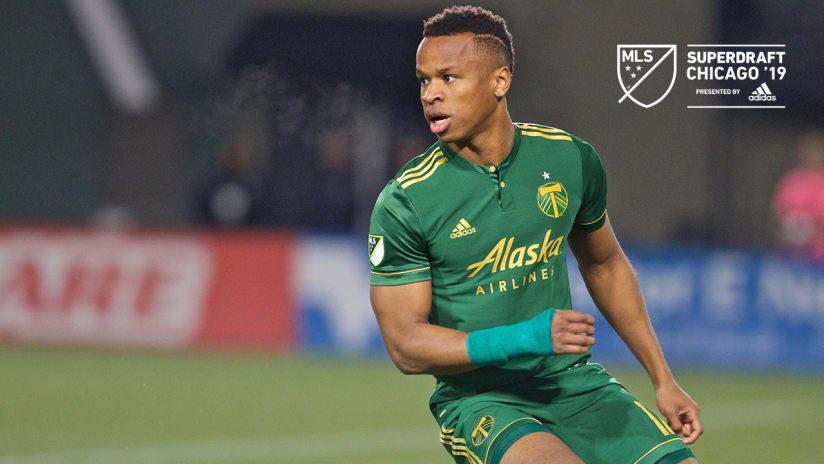With Darlington Nagbe and Jeremy Ebobisse highlighting their draft history, the Portland Timbers’ record in MLS’ SuperDrafts is better than mosts’. After all, how many teams can claim to have picked two United States national-team talents in eight years? Add New York Red Bulls’ defender Aaron Long to that mix, and Portland’s found a lot of eventual booms among a process’ full of “busts.”
Busts is in quotes, there, for a reason. It’s part of the idiom. But even hinting players who fall below an international bar are “busts” would be unfair without some heavy qualification. In every draft, in every sport, most picks don’t work out. That’s just the nature of how leagues take in young talent. Since 2011, the Timbers have selected three internationals and have seen six other players earn time in MLS, but – to evoke another figure of speech – the draft continues to be a lottery, of sorts.
For Portland, though, that lottery always takes place amid unique concerns. Neither one of the league’s biggest spenders nor a team without resources, the Timbers have always been particularly attractive to foreign talent, going all the way back to when Diego Chara was lured by Rose City’s draw. The environment at Providence Park has a lot to do with that status, but whereas some teams might have steep hills to climb in acquiring talent, the Timbers have a number of strong, relative selling points.
But the team’s roster crunch hasn’t only been defined by foreign talents. As Portland’s first MLS teams showed, the Timbers have always been attractive to MLS veterans, too, something as true when Jack Jewsbury made Portland his home as when players like Nat Borchers and Ned Grabavoy finished their careers in Oregon. Combined with the natural evolution of the team’s depth chart – as well as the decreased turnover you’d expect as quality improves – and roster spots become more difficult to claim for college talents.
Those are the realities of the SuperDraft for Portland, ones that make Friday’s annual event (10am PT, Webstream at Timbers.com) less about the first-team depth chart than about a broader, multi-level use. With most of last year’s Western Conference Championship squad set to return, spots on even the team’s supplemental roster could prove scarce, especially once new signings are announced in the coming weeks. Picking at 23, 47, 71 and 95 overall, the Timbers’ MLS draft may be as more about offering USL opportunities than it is finding, for 2019, first-team talents.
Former draft picks like Russell Cicerone (2017), Neco Brett and Wade Hamilton (both 2016) fit this mold, having immediately earned major playing time for T2. In other cases, the team elected to take some long shots on the draft, like Mamadou Guirassy – a fourth-round pick last year who eventually signed in France. Unless you’re selecting at places where you can get a Nagbe or Ebobisse, you have to take a longer view with your picks, and some risks. And that longer view, given how the Timbers are currently set up, means asking who might develop in USL.
Even there, though, roles may prove increasingly scarce. Foster Langsforf was a major contributor, there, last season, but he was a Homegrown Player that came up through the academy. There was almost no 2018 draftee who could have displaced him in Cameron Knowles’ squad. Players like Marvin Loría and Renzo Zambrano? They were signed from outside the draft process. Again, few players from the SuperDraft could have taken their spots. Eryk Williamson, Marco Farfan, Kendall McIntosh – given where the Timbers tend to pick these days, those players weren’t being displaced by January picks. Though T2’s squad will endure major chances this year, time at USL is becoming less assured. There are a number of ways beyond the draft the organization uses to acquire talent.
There will certainly be players at the end Friday’s rounds who pique Timbers’ interests, leaving people like Gavin Wilkinson, Ned Grabavoy and Giovanni Savarese hoping to get them to Portland. But over eight seasons of evolution at the top level, Portland’s becoming a place with fewer opportunities of college talents. That doesn’t mean a chance to get a Jeremy Ebobisse won’t be pursued. But it also means, as with other clubs, opportunities further down the depth chart are becoming more difficult to offer.












